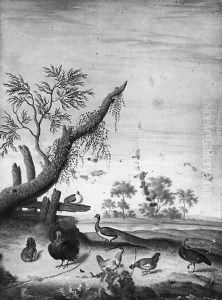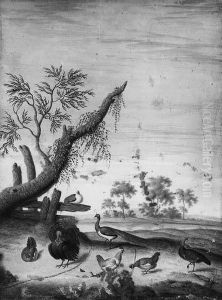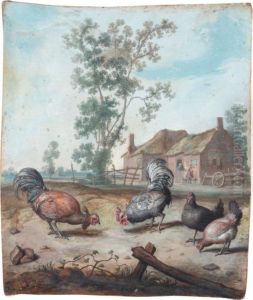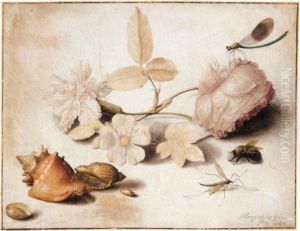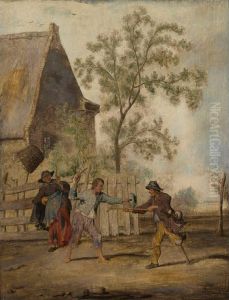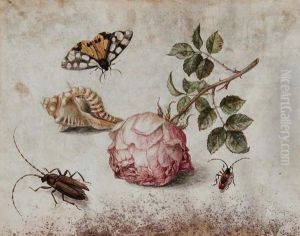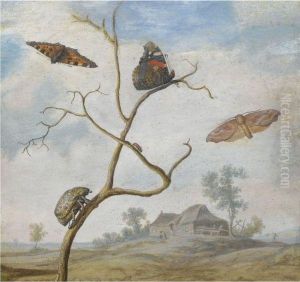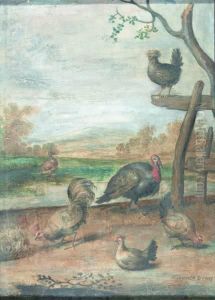Margaretha De Heer Paintings
Margaretha de Heer was a Dutch Golden Age artist, born around the year 1600. Her exact birth date and place are not well-documented, which is not uncommon for female artists of that period. She was active as a painter in the mid-17th century and is known to have worked in Friesland, a northern region of the Netherlands. Margaretha de Heer’s life and work are less documented than those of her male counterparts, which is indicative of the general historical oversight of women’s contributions to art during this era.
De Heer's oeuvre is not extensive, or at least not much of it has survived or has been attributed to her. She is known to have painted still lifes, a genre that became increasingly popular during the Dutch Golden Age. Her works often featured flowers and fruit, which were common subjects in still life paintings of the time, reflecting both the fascination with botanical and zoological discoveries as well as the wealth and trading power of the Netherlands during the 17th century. Her style would have been influenced by the broader trends of Dutch realism, where the focus was on meticulous detail, rich colors, and the play of light and shadow.
Margaretha de Heer's death is also not precisely recorded, though it is believed that she died around the year 1665. Like many women artists of her time, her contributions to art history were largely unrecognized until more recent scholarship began to acknowledge and reevaluate the role of women in the arts. Today, her surviving works serve as a testament to her skill and to the broader tapestry of Dutch painting, though much about her life and career remains a mystery. Efforts to rediscover and properly attribute works by female artists like de Heer continue, as art historians work to fill in the gaps of art history's predominantly male narrative.
